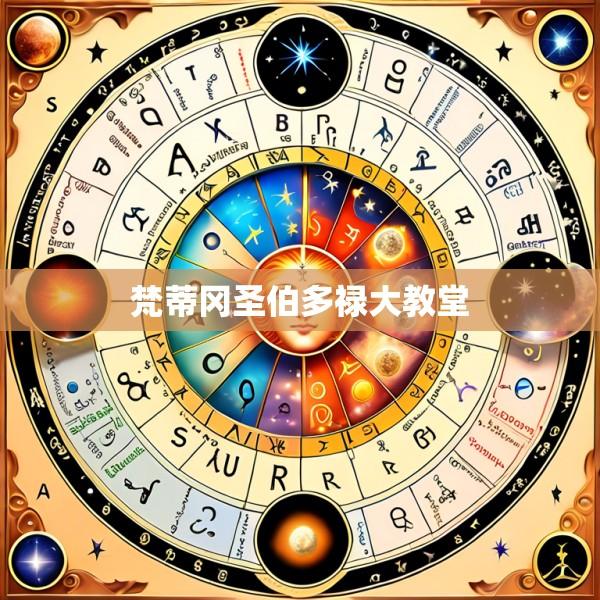Saint Peter's Basilica: The Heart of Catholicism and Renaissance Masterpiece
Saint Peter's Basilica (Italian: Basilica di San Pietro in Vaticano), located in Vatican City within Rome, Italy, is the largest Christian church in the world by interior area (15,160 square meters) and one of the most iconic symbols of Catholicism. It is the burial site of Saint Peter, the first Bishop of Rome and chief apostle of Jesus, making it a principal pilgrimage destination and the site of key papal liturgies—including Masses attended by up to 80,000 people during major events like Easter or Jubilees.
Historical Evolution: From Constantine to the Renaissance

The basilica’s origins date to 326–333 AD, when Emperor Constantine the Great built the Old St. Peter's Basilica over the traditional tomb of Saint Peter (located beneath the current high altar). By the 15th century, the old structure was crumbling, prompting Pope Nicholas V to initiate plans for a new basilica. Pope Julius II launched the reconstruction in 1506, inviting renowned architects to submit designs. Donato Bramante’s Greekcross plan (inspired by the Pantheon) was selected, emphasizing symmetry and grandeur. After Bramante’s death in 1514, Raphael, Antonio da Sangallo, and Baldassare Peruzzi modified the design, extending the nave to create a Latin cross (a more traditional Christian layout). Michelangelo took over in 1546 at age 71, reinforcing the central piers to support a massive dome and refining the structure’s proportions. Following Michelangelo’s death in 1564, Giacomo della Porta completed the dome (1590), and Carlo Maderno extended the façade to a Latin cross (1607–1615). Gian Lorenzo Bernini finalized the basilica in 1626 with the addition of the grand colonnade and piazza.
Architectural Splendor: Renaissance and Baroque Fusion
The basilica’s design is a masterpiece of Renaissance and Baroque architecture. The dome, a defining feature, has an interior diameter of 42 meters and rises 138 meters above the floor (including the cross). Michelangelo’s design uses a doubleshell structure (brick and stone) to distribute weight, with ribs and chains reinforcing the dome against outward thrust. The façade, designed by Carlo Maderno, is 376 meters wide and 149 meters high, adorned with statues of Christ, John the Baptist, and the apostles. Bernini’s colonnade (1656–1667)—a 240meterwide elliptical structure with 284 Doric columns—forms a "motherly embrace" around St. Peter’s Square, guiding pilgrims toward the entrance. The interior features towering marble columns, intricate mosaics, and gilded decorations, creating a sense of awe and reverence.
Artistic Treasures: Masterpieces by Giants
Saint Peter’s Basilica houses some of the most celebrated artworks in history. Michelangelo’s Pietà (1498–1499), located in the first chapel on the right, depicts the Virgin Mary cradling the body of Jesus after the Crucifixion. The sculpture is renowned for its delicate realism and emotional depth, though it is now protected by glass after being damaged in 1972. Gian Lorenzo Bernini’s Baldachin (1623–1634), a massive bronze canopy over the high altar, symbolizes the authority of the papacy and the continuity of apostolic succession. The Chair of Saint Peter (Cathedra Petri), also by Bernini, is a gilded bronze monument in the apse, representing the apostle’s teaching authority and the unbroken line of popes. Other highlights include Raphael’s Transfiguration (a painting, not a sculpture, located in the Vatican Museums but often associated with the basilica) and the tombs of popes such as Paul III and Urban VIII.
Spiritual and Cultural Significance
Beyond its architectural and artistic value, Saint Peter’s Basilica is a spiritual epicenter for Catholics. It is the site of the Papal Altar, where only the pope can celebrate Mass, and the Confessio, an underground chapel beneath the high altar that houses Saint Peter’s tomb. The basilica’s connection to Saint Peter—the "rock" upon which Jesus built his church (Matthew 16:18)—reinforces its status as the "mother church" of Catholicism. It has witnessed pivotal moments in church history, including the election of popes, canonizations, and jubilee celebrations. For pilgrims, visiting the basilica is a journey of faith, offering the chance to pray at the tomb of a saint, admire masterpieces of art, and experience the grandeur of a centuriesold tradition.
